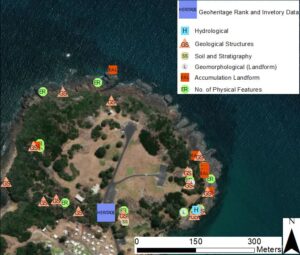The emerging broad science of geodiversity defined in terms of geomorphological diversity assesses geomorphological features of territory by comparing them in an extrinsic and intrinsic way. This paper uses SRTM (Shuttle Radar Topographic Mission) data and GIS (Geographical Information System) techniques to assess the geomorphological diversity of Komati Gorge, in Mpumalanga Province of South Africa. […]
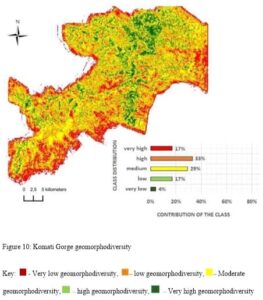
Faced with the increase of human activities that permanently alter nature, it is more and more necessary to educate people about the importance of protecting nature, including both the biotic and abiotic aspects. In this context, UNESCO Global Geoparks (UGGp) are reference territories to educate people about geodiversity and geoconservation in different environments. On the […]
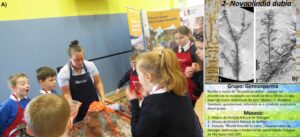
Investigation of new geoheritage sites, their conservation and promotion for tourism development have become a recent trend in the tourism sector. The Indian subcontinent exhibits a wide range of geological and geomorphological features, many with global significance. The Kachchh district of Gujarat is blessed with such geological and geomorphological elements, ranging in age from Mesozoic […]
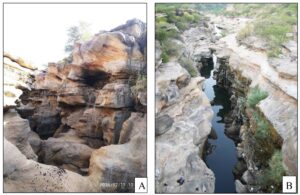
The importance of the borehole core in aiding our understanding of the subsurface is generally underappreciated outside the geoscience world. The use of boreholes to access geological resources has a long history and the study of recovered core samples is still pivotal in modern geological and palaeoclimate studies. An example of the incorporation of a […]
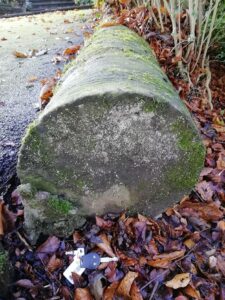
The exclusivity of biodiversity and geodiversity assessment hinders conservation outcomes, evidenced by the prioritization of biodiversity in conservation literature, and lagging developmental state in geodiversity assessment approaches, geoconservation strategies and outcomes. This study develops a consolidated approach, “omnidiversity”, amalgamating geodiversity and biodiversity assessment with geoconservation strategies and complementary ecological conservation criteria using ArcGIS mobile applications. […]
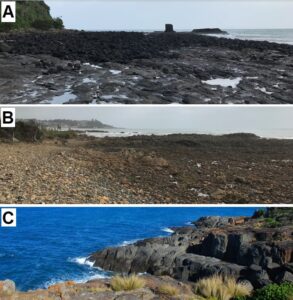
Geoparks in Australia have had a complex recent history. Following the demise of the former Kanawinka UNESCO Geopark in 2012, two potential UNESCO Global Geopark projects supported by local government agencies and embracing large areas were initiated in other Australian regions in 2016. These were for the Etheridge Geopark in Far North Queensland and the […]
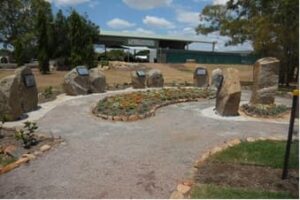
Life on Earth is influenced by abiotic nature, providing resources and shelter for living beings on the Earth. Hence, this part of nature should be well treated and protected. Study of geodiversity can facilitate education about abiotic nature and processes occurring around us. Geodiversity as a discipline is relatively young, but worthy of more attention […]
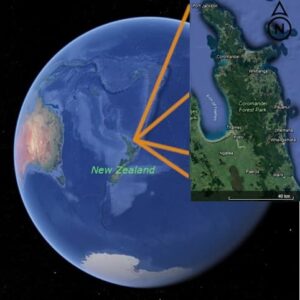
The designation of geological sites in Cuba is relatively new. During the early years of the 21st century some sites were proposed, but only in the province of Pinar del Rio have geosites been officially approved. Here we propose two further geosites, one at Cayo Sabinal (Camagüey Province) and the other at Cayo Coco (Ciego […]
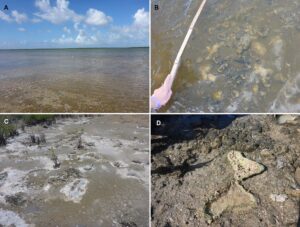
Over the course of the Earth’s history, the development of geodiversity has allowed the establishment of biotic diversity on our planet. Just as biodiversity is the subject of studies and protection actions, abiotic nature also needs to be conserved and used more sustainably. One of the ways to do this is to delimit areas where […]
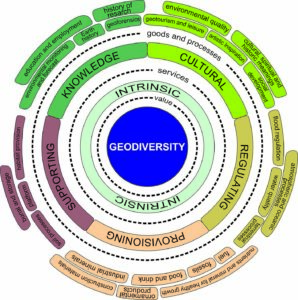
Geoconservation outcomes are hindered by highly subjective and conflicting criteria, varying assessment objectives, disparities in geoconservation strategy steps and the inadequate capturing and representation of geological data in dynamically changing inventories. Review shows that geoconservation outcomes are further hindered by the exclusion of quantitative geodiversity assessment from geoconservation strategies. A geoconservation toolkit is presented using […]
